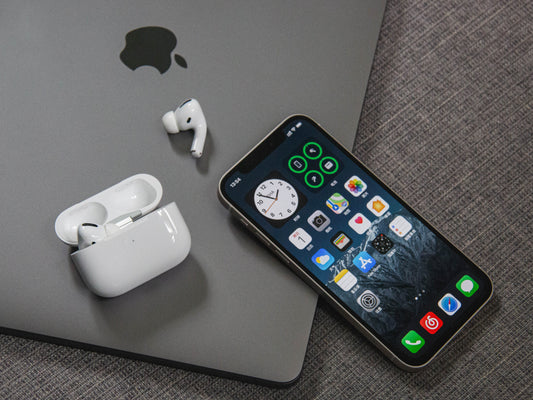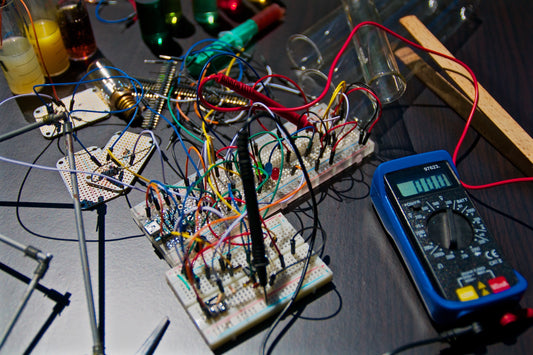
Navigating Manufacturer’s Warranty and Return Policies for Refurbished Electronic Products
This blog post will explore how to navigate manufacturer’s warranty and return policies for refurbished electronic products. We’ll also provide some tips on what to look for when buying refurbished products so that you can avoid any potential headaches down the road.
When buying a refurbished electronic product, it is essential to understand the warranty and return policies of the manufacturer. Although refurbished products are typically cheaper than new products, there is always the potential for problems.
By understanding the warranty and return policies, you can be better prepared if something goes wrong.
Most manufacturers offer a standard warranty on their new products. This warranty may cover defects in materials or craft for a set period. The warranty length varies by manufacturer, but it is typically one or two years.
If you buy a refurbished product, your warranty will likely be different than if you purchased a new product. Many manufacturers offer a shorter warranty on refurbished products or may only cover specific problems with the product. It is essential to read the terms and conditions of the warranty before you buy a refurbished product.
If something goes wrong with your refurbished product, you may need to return it to the manufacturer. It can be a hassle, especially if you live far from the manufacturer's headquarters. Make sure you know the return policy before buying a refurbished product.
Research beforehand is the best way to avoid any problems with your purchase. Read reviews of the product, and make sure you understand the warranty and return policies of the manufacturer.
What is a Manufacturer’s Warranty?
A product manufacturer offers a manufacturer’s warranty. It may cover defects in materials or craft for a set period. The warranty length varies by manufacturer, but it is typically one or two years.
If you buy a refurbished product, your warranty will likely be different than if you purchased a new product. Many manufacturers offer a shorter warranty on refurbished products or may only cover specific problems with the product.
It is essential to read the terms and conditions of the warranty before you buy a refurbished product.
What does the Manufacturer Warrant cover?
Materials: covers any physical breakdowns in materials that comprise the construction of an item.
Workmanship: Covers manufacturing errors and how each piece was assembled.
Parts: Covers specific components included in the product and may not be limited to those that failed during the first year post-purchase; depending on the company, this could be either lifetime or limited to 1-10 years.
Accidental Damage from Handling (ADH): Coverage against accidental damage sustained while using/handling the product as intended.
Liquid Damage: Covers accidental liquid damage such as spilling water onto the keyboard; must have occurred within the coverage period and most likely will not include humidity/condensation damage.
Duration of Warranty:
The standard warranty is typically one or two years, but it may be shorter for refurbished products.
What is not covered by the Manufacturer’s Warranty?
Cosmetic Damage: Damage that does not affect the product's functionality, such as scratches or dents.
Natural Wear and Tear: gradual decrease in performance or function due to use over time.
Software Issues: Problem with software that does not relate to physical breakdowns or errors in manufacturing.
Usage Outside of Intended Purposes: Using a product for something it was not meant to do, such as using a power tool for home repairs.
Repairs Not Performed by Manufacturer: If something goes wrong with your product, you will likely need to send it back to the manufacturer for repair.
Living far from the manufacturer's headquarters can be a hassle. Make sure you know the return policy before buying a refurbished product.
How to Initiate a Warranty Claim
Most manufacturers will require you to fill out a warranty claim form and send it in with the product. They may also require you to provide proof of purchase, such as a receipt or invoice.
The manufacturer will assess the product to determine whether the warranty covers the issue. If it is, they will repair or replace the product, depending on the terms and conditions of the warranty.
If the warranty does not cover the issue, the manufacturer may still be able to help you, but you will likely have to pay for the repairs yourself.
It is important to note that not all manufacturers offer worldwide coverage on their warranties. Make sure you check the terms and conditions of the warranty before you buy a product.
Manufacturer’s Warranty vs. extended warranty:
A manufacturer's warranty is a guarantee from the company that made your product. It covers defects in materials and workmanship for a certain time after you purchase the product.
An extended warranty is a service contract that covers repairs or replacements after the manufacturer's warranty expires. There are pros and cons to both types of coverage.
With a manufacturer's warranty, you can be confident that your product will be covered if it develops a problem within the specified time frame. However, these warranties typically only cover defects and not accidental damage.
You may have to pay a deductible for repairs with an extended warranty, but you'll be covered for a more extended period than with a manufacturer's warranty. And most extended warranties cover both defects and accidental damage.
Which type of coverage is suitable? An extended warranty may be a good idea if you're worried about accidental damage. If you're comfortable taking chances with the manufacturer's warranty, you may want to save money and go without the extra coverage. Ultimately, the decision comes down to personal preference and peace.
Warranty for refurbished electronic products
When you purchase a refurbished electronic product, it’s essential to know the manufacturer’s warranty and return policy in case of any problems.
Many refurbished products come with a limited warranty that covers defects for a certain period. Some manufacturers also offer extended warranties for an additional fee.
If you have a problem with your refurbished product, contact the manufacturer or retailer to see if they can help you troubleshoot the issue.
If the problem can’t be resolved, you may be able to return the product for a refund or exchange. Be sure to keep all documentation, such as your receipt and warranty information, in case you need to use it later.


